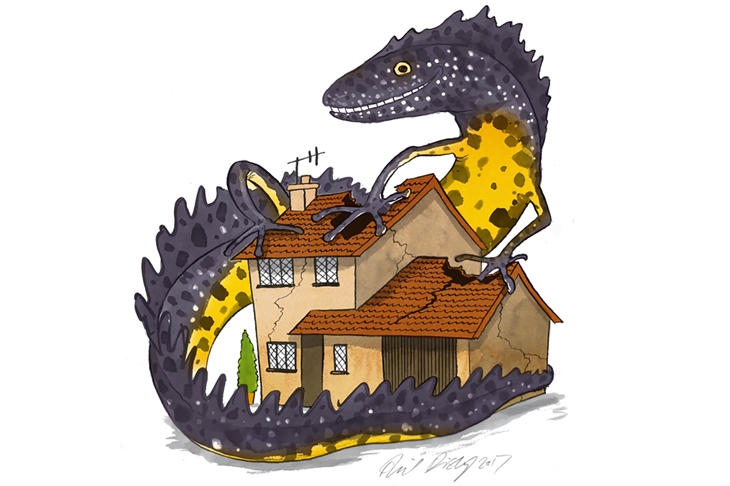The dragon hung motionless above the surface of the earth, belly picked out in the colours of fire and a stegosaurus zigzag along his back. A beautiful thing, this dragon, but not easily seen: you must go out at dusk in spring with a torch and a knowledge of the places they lurk. Here was just such a spot. It was his season of grand passion, and yet the expression on the face was remote, almost indifferent.
A great crested newt. Floating in a pond. It is the dread of every developer: to pay decent money for a mandatory ecological survey and to have the surveyor find a population of them right in the middle of your working area, meaning compensation, relocation and, in some cases, cancellation.
It’s easy to mock this process. Newts are almost as rich a source of comedy as mothers-in-law. Everybody likes frogs, toads are thrillingly sinister, with their witchy associations. But newts are ridiculous and obstructive.
Ken Livingstone spent a political lifetime being mocked for being a newt fancier. P.G. Wodehouse never tired of the fact that Gussie Fink-Nottle — the one who, being ‘a glutton for punishment’, stared at himself in the mirror — kept newts. The newt-keeping was almost as absurd as his taste for orange juice and Madeline Bassett.
The shield carried by the armies of Political Correctness Gone Mad surely bear the image of a newt rampant. Now there are serious steps on hand to cut down their nuisance value to developers. They come from the government’s own conservation organisation Natural England, which is not, it’s fair to say, a hotbed of radicalism. Natural England has announced, tautologically, that it is to ‘implement an innovative new approach to the conservation of great crested newts across the country’. It follows, rather closely, a pilot scheme in Woking and involves a shift to pre-emptive action and wider surveying of newt habitat without reference to impending development. The idea is that the whole business becomes more streamlined.
This has won an enthusiastic welcome from developers and has played well in the for-God’s-sake media, where newts have established a traditional role as ludicrous impediments to human advancement. It has won a more cautious welcome from conservation NGOs, including the Wildlife Trusts and the Amphibian and Reptile Conservation Trust. People involved in wildlife conservation are not by definition opposed to development of all kinds. Rather, they question the notion that the pursuit of human happiness is best served by uncontrolled development, and suggest that human happiness might also be related to the environment in which humans have their being.
The truth is that the great crested newt is endangered across Europe and declining in this country. It’s also true that this species has taken on a symbolic role out of all proportion to its utility. For wildlife conservation, the great crested newt is the species that stands on the line that divides reckless development from environmental responsibility. In other words, it’s not about newts.
If the new procedures work out as a way of allowing developers to go ahead without worrying about the bloody newts, then other irritating and troublesome species would become a great deal more vulnerable when they get in the way. These species would include water voles, dormice and several species of bats.
Newts are hard to see unless you know how to look for them. They have acquired comic value from their obscurity, for the enthusiasm they arouse in unexpected people, and for their bizarre appearance. There’s a feeling that when it comes to looking after nature, newts don’t really count. We can be let off caring.
We should make peace with newts, not least because après newts, a deluge of unsympathetic development might follow might follow. Above all, we should remember that as we impoverish the wild world, so we impoverish ourselves.






Comments